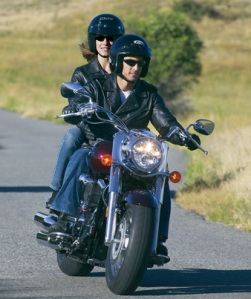By Earl Weener
 With the start of the summer driving season soon upon us, the National Highway Traffic Safety Administration (NHTSA) is once again kicking off its annual Click It or Ticket campaign to coincide with the Memorial Day holiday period, May 23 through June 5. Begun in 1993, this campaign is now a national mobilization effort to encourage the use of seat belts as a way of reducing highway fatalities.
With the start of the summer driving season soon upon us, the National Highway Traffic Safety Administration (NHTSA) is once again kicking off its annual Click It or Ticket campaign to coincide with the Memorial Day holiday period, May 23 through June 5. Begun in 1993, this campaign is now a national mobilization effort to encourage the use of seat belts as a way of reducing highway fatalities.
What surprises me is the continued need for such a campaign. Seat belts have been around since the 1950s, yet nearly one in six Americans still fail to regularly use one when motoring. In fact, with a use rate of approximately 85%, the U.S. trails other industrialized countries, such as Australia and Canada where rates stand at well over 90%.
From my work at the NTSB, I know motor vehicle crashes are responsible for more deaths annually in the U.S., than in all other transportation modes combined. Yet, one of the greatest defenses to this risk, and also the simplest thing to do, is put on a seat belt when you climb into a vehicle. Since 1975, NHTSA estimates that over 267,000 lives have been saved due to seat belt use.
As an airplane pilot, I would never consider flying without wearing my seat belt. The forces experienced during turbulence, in hard landings, or during a survivable crash are simply too significant for the body to manage without a restraint. As an engineer, I know the laws of physics don’t change when I get into a car, truck or SUV, so I never drive my car without wearing a seat belt either. Bottom line: Seat belts have a proven track record, so be safe and buckle up!
 Earl F. Weener, Ph.D., took the oath of office as a Member of the National Transportation Safety Board on June 30, 2010. Dr. Weener is a licensed pilot and flight instructor who has dedicated his entire career to the field of aviation safety.
Earl F. Weener, Ph.D., took the oath of office as a Member of the National Transportation Safety Board on June 30, 2010. Dr. Weener is a licensed pilot and flight instructor who has dedicated his entire career to the field of aviation safety.




